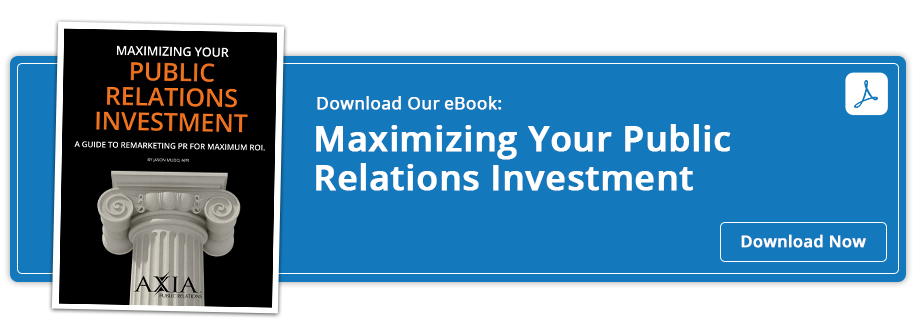 It might seem daunting to figure out where to start with a public relations strategy and program. It’s much easier with a public relations plan, but if you’ve never developed one, it might seem challenging. That’s for good reason. The craft of public relations isn’t something you learn overnight. It takes time and experience.
It might seem daunting to figure out where to start with a public relations strategy and program. It’s much easier with a public relations plan, but if you’ve never developed one, it might seem challenging. That’s for good reason. The craft of public relations isn’t something you learn overnight. It takes time and experience.
To help you get started, we’ve provided the 10 components of a strategic PR and corporate communications plan outline here, and we’d be happy to help you take it to the next level. This 10-step plan should begin after you define what you want to accomplish and the things you want to correct, prevent, or maintain.
1) OVERALL GOALS
■ You should have less than three goals; one may be enough. These should always be consistent with your management goals.
■ Think in terms of end results rather than process alone.
2) TARGET AUDIENCES OR PUBLICS – WHO?
■ Internal and external audiences.
■ Groups or subgroups with whom you need to communicate (both talk and listen).
Consider:
-
- Who needs to know or understand?
- Who needs to be involved?
- Whose advice or support do we need?
- Who will this affect?
3) OBJECTIVES FOR EACH AUDIENCE – WHAT?
■ Write it SMARTER = Specific, Measurable, Attainable, Relevant, Timely, Ethical, Recorded
■ Think in terms of the awareness, attitude, action, or change you desire.
■ Verbs: create, maintain, enhance, improve, prevent, promote, support, and gain.
■ Phrase objectives in terms of specific results you desire and what you think is possible.
■ Usually, it works better to determine audiences and then objectives for those audiences.
■ The same objective may fit a number of audiences, and strategies may need to be different.
4) STRATEGIES – WHY?
■ After your research, you may find relevant facts that direct your campaign. Cite the research in your strategy.
■ In planning: How will you approach the challenge in order to work toward your objectives? What can you build on or take advantage of in your situation? What devices will you employ?
■ Your strategy may describe the diplomacy, psychology, philosophy, themes, and appeals you‘ll use or the message you’ll convey.
■ It may describe how you’ll work with other community groups.
■ Vehicles or channels you’ll use to reach and communicate with your audience should appear here and justification for why you’re using the medium.
5) TACTICS – HOW?
■ How you will use your resources to carry out your strategy and work toward objectives?
■ You’ll have 2-5 tactics per strategy.
6) ACTIVITIES
■ Specific activities required under your tactics.
■ Vehicles or channels you’ll use to communicate may appear here.
7) TIMETABLE AND TASK LIST – WHEN?
■ Who is accountable and responsible for each item?
■ Work backward from deadline – or forward from the start date.
8) EVALUATION
■ How will you know if you’re reaching your objectives?
■ Restate the SMARTER objective and how you will measure it.
9) MATERIALS
■ What do you need to produce or purchase?
10) BUDGET ITEMS
■ Labor costs (staff and agency resources).
■ Out-of-pocket costs: computers, software, training, services, SaaS, service bureaus, materials, and other tools and expenses.
 Clients love Jason’s passion, candor, and commitment as well as the team he has formed at Axia Public Relations. He's advised some of America’s most admired brands, including American Airlines, Dave & Buster’s, Hilton, HP, Pizza Hut, and Verizon. He is an Emmy Award-winning, accredited public relations practitioner, speaker, author, and entrepreneur and earned his certification in inbound marketing. He founded the PR firm in July 2002. Learn more about Jason.
Clients love Jason’s passion, candor, and commitment as well as the team he has formed at Axia Public Relations. He's advised some of America’s most admired brands, including American Airlines, Dave & Buster’s, Hilton, HP, Pizza Hut, and Verizon. He is an Emmy Award-winning, accredited public relations practitioner, speaker, author, and entrepreneur and earned his certification in inbound marketing. He founded the PR firm in July 2002. Learn more about Jason.
Photo 117431897 © Atit Phetmuangtong | Dreamstime.com
Topics: PR tips, PR planning


Comment on This Article